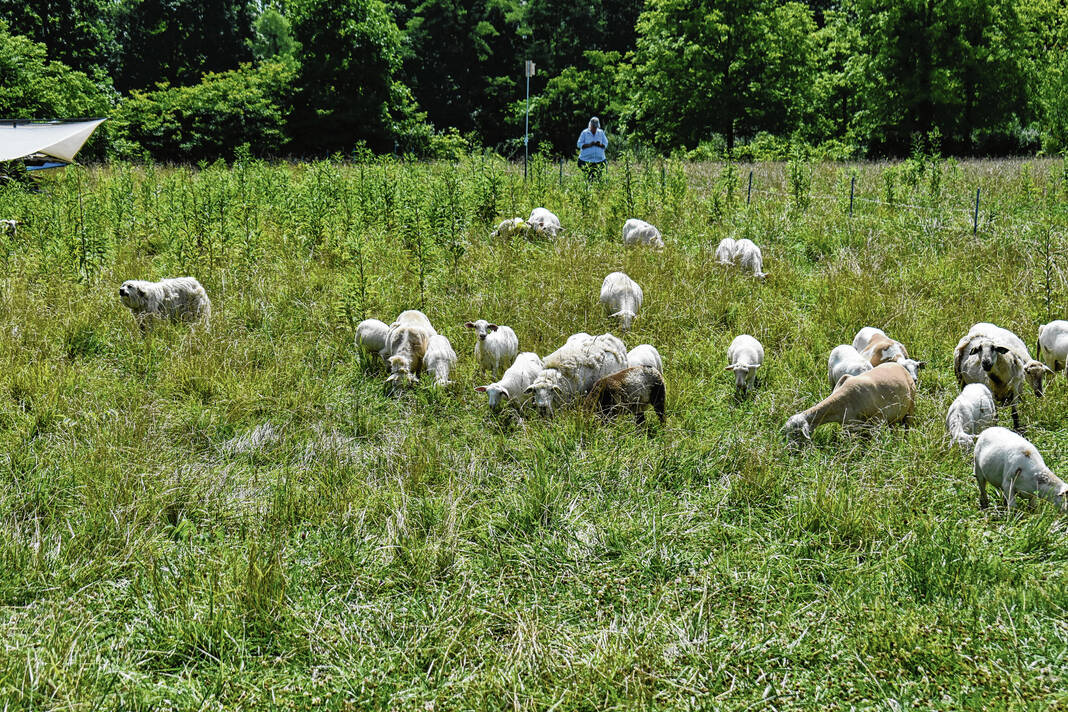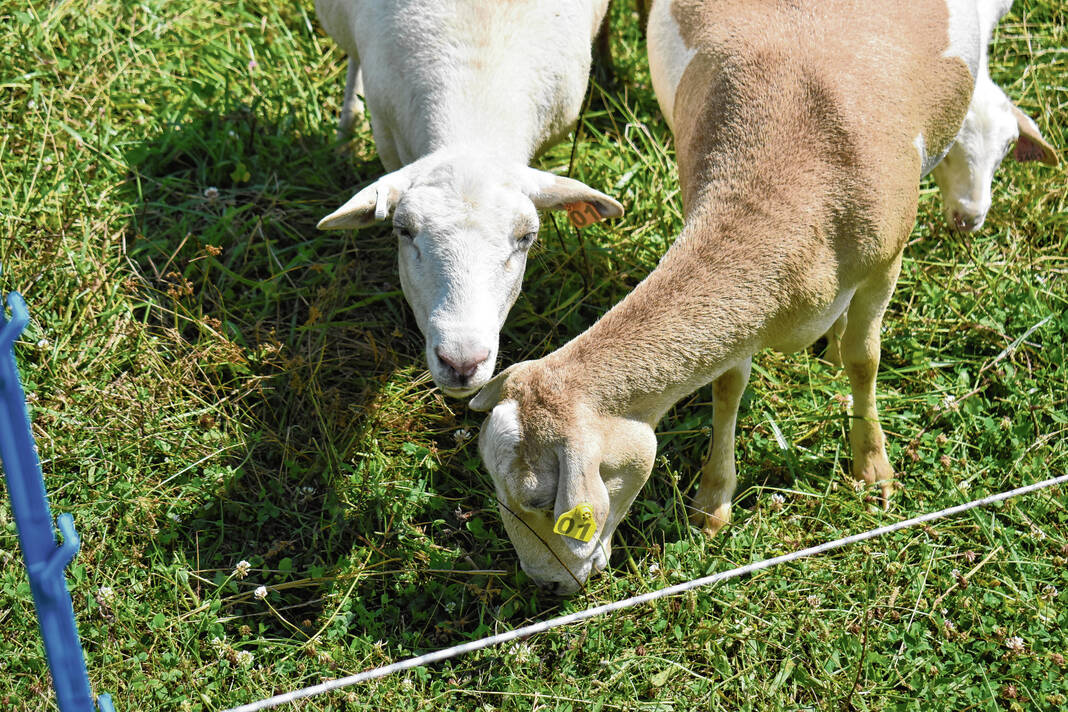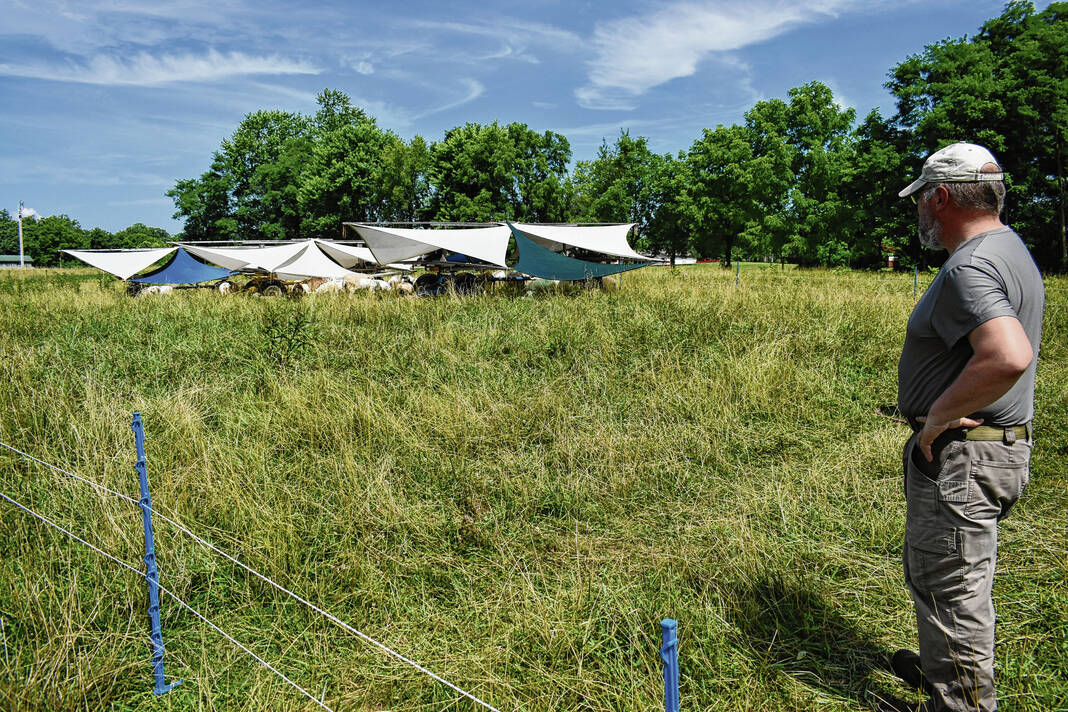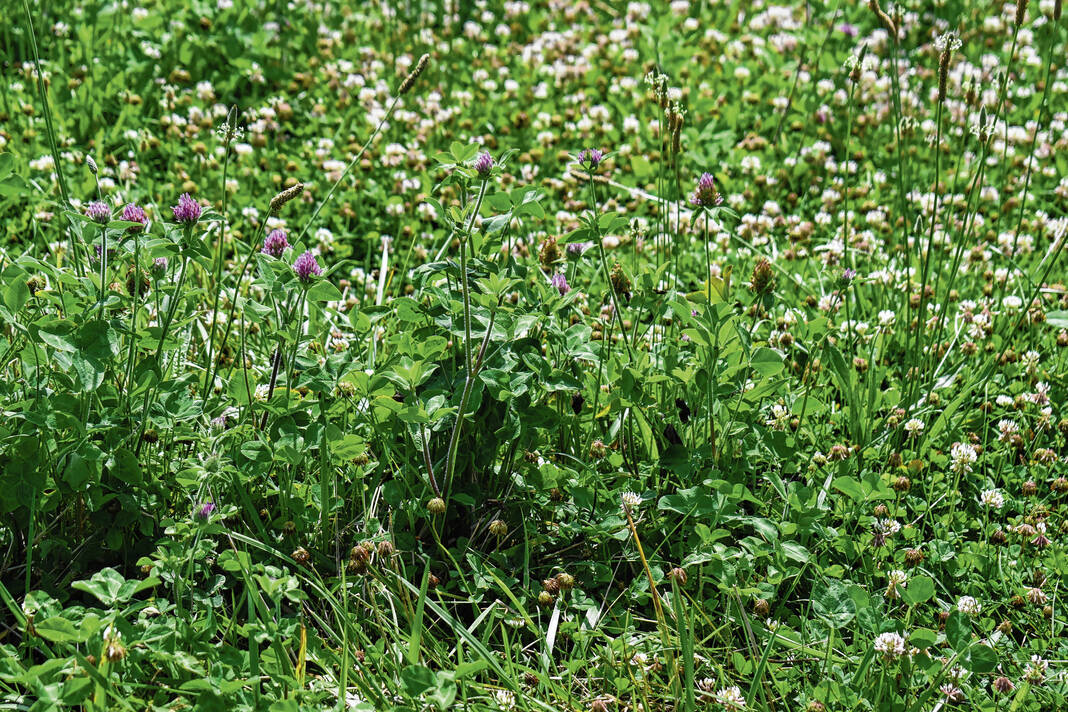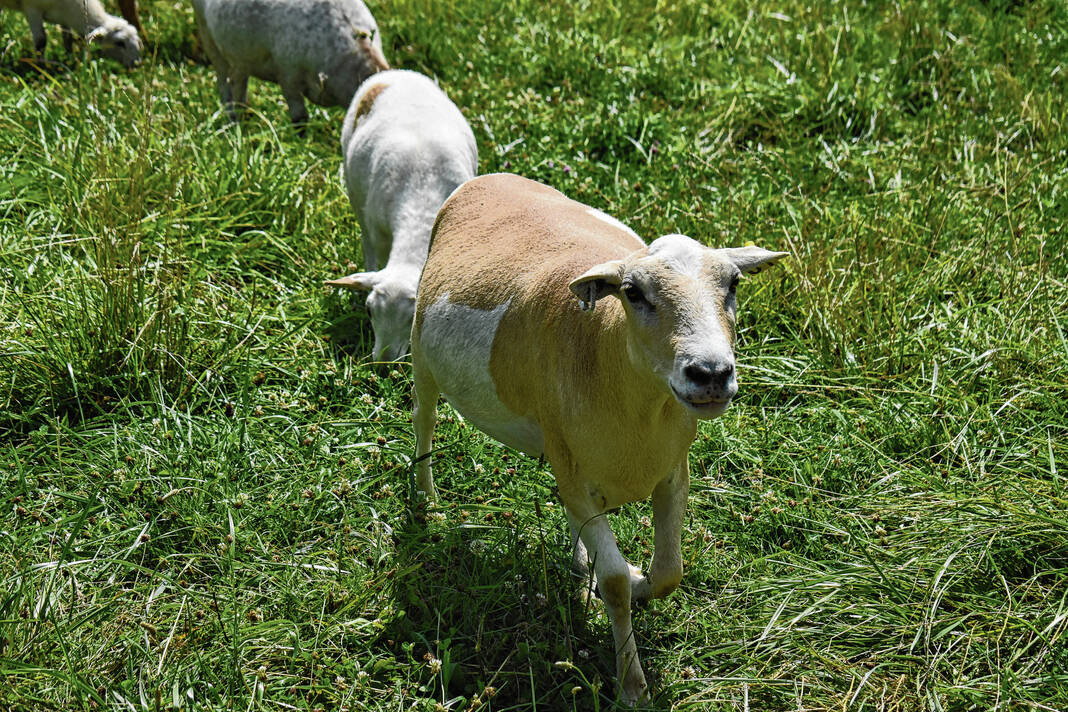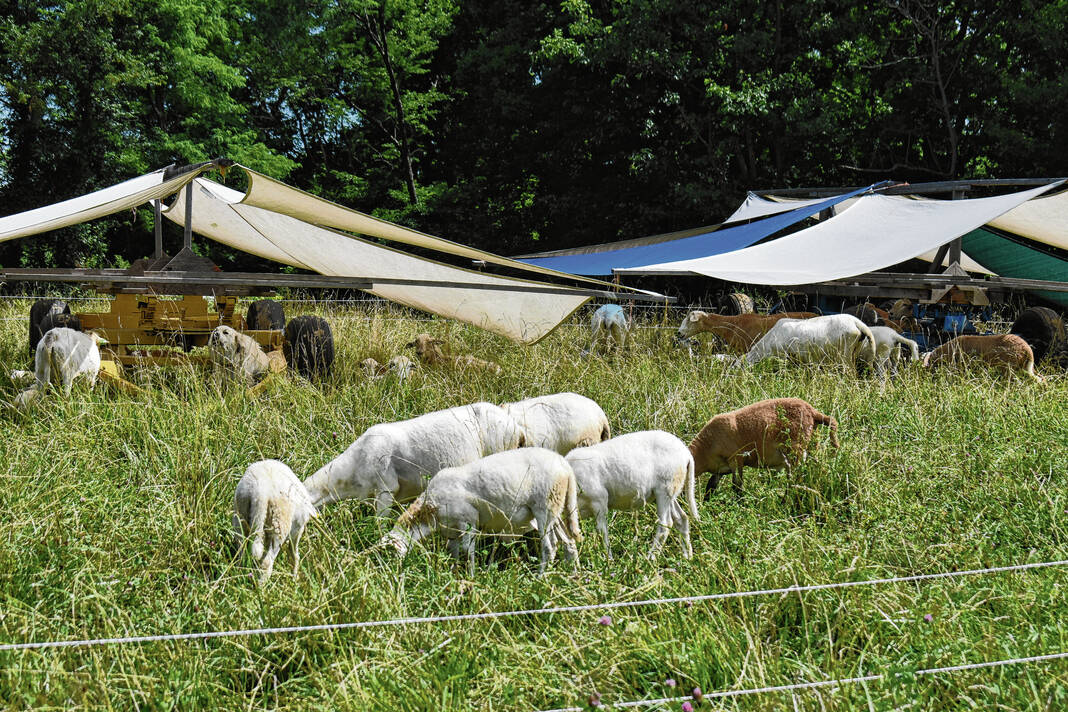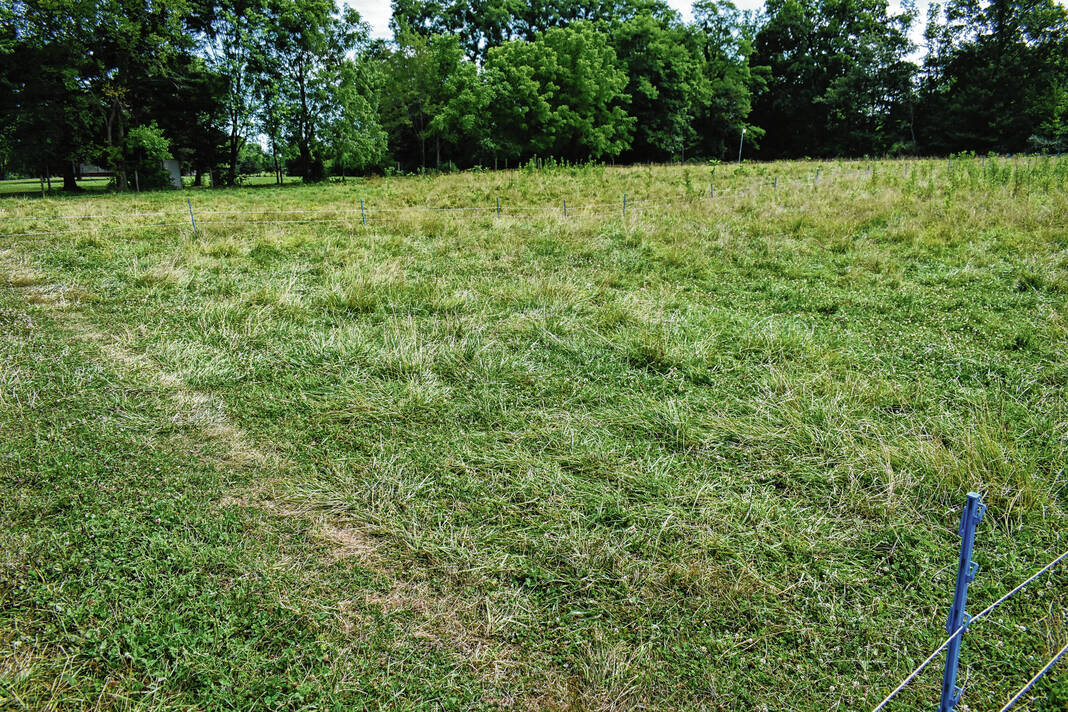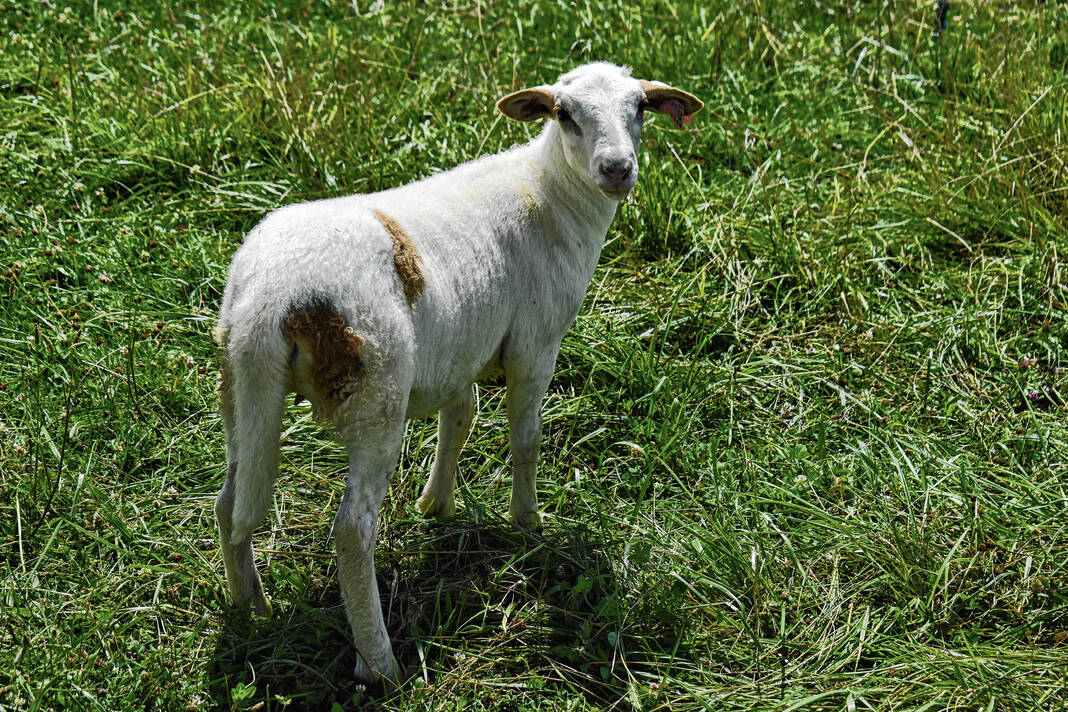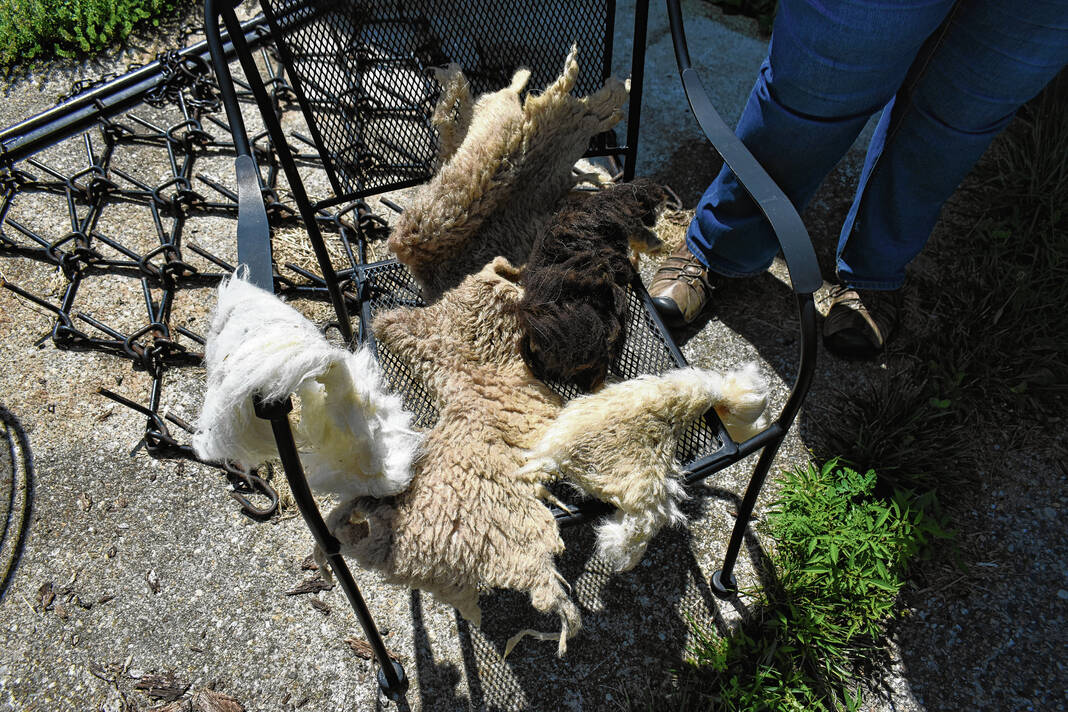What was once a golf course in the hills south of Trafalgar now lies a sheep farm.
Indian Springs Katahdins, located on South County Road 200W north of Indian Creek Road, is a farm where Emily and Jeff Bradley raise 100% grass-fed sheep. The former Franklin residents bought the land, which at one point was Indian Springs Golf Course, about seven years ago and moved onto the property four years ago.
When the Bradleys bought the approximately 33 acres, it had not been operating as a golf course for some time and had begun reverting back to nature. They had no interest in restarting the golf course, but they did have an interest in farming it. Now they raise sheep on the 15 acres of the property suitable for grazing.
“Five years ago, I would have never thought that I would be a sheep farmer and I’m loving it,” Emily Bradley said.
At a time when land that has been farmed for generations is being sold for new subdivisions and commercial growth, the Bradley farm is an outlier in growing Johnson County. The trend of selling off farmland is growing not only locally but across the entire state, data shows.
Johnson County lost 5,476 acres of agricultural land from 2010-2022, based on changes in property classifications analyzed by the Indiana State Department of Agriculture in a recent study. Indiana as a whole lost about 345,700 acres of farmland during the same period. Most of the loss for the state was to residential development around the edges of cities and suburban areas.
These are net land losses, as there were cases of agricultural land being gained, which was added to the formula. Gross farmland losses total more than 508,100 acres, while gross gains total 387,700 acres statewide, data shows.
Significant net losses
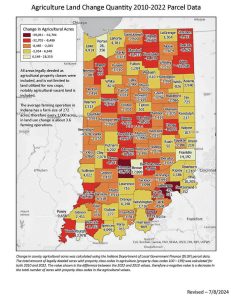
The study was commissioned by Indiana General Assembly lawmakers last year, which asked ISDA to create an inventory of farmland. Two data sources were used for it: a parcel data set from Indiana’s Department of Local Government Finance and a cropland data layer from the U.S. Department of Agriculture.
Data from DLGF showed a net loss of about 18.31 million acres of land across the state with property class codes in the agricultural range in 2010, which dropped slightly to 17.97 million acres — a decrease of about 345,700 acres. Cash grain and general farms, as well as specialty crop farms, lost the most acreage, the study says.
More acres may not be in use, however. Because the parcel data doesn’t distinguish between renewable energy and agricultural land uses, analysts couldn’t tell whether farmland was hosting renewable energy installations.
ISDA also compared 2010 and 2022 data to find the primary drivers of acreage losses and additions. Most of the known converted land became residential, while others became vacant.
A caveat for this data is that researchers found matches between the 2010 and 2022 data sets for just 85% of parcels. This was because any parcel that had to be divided or combined or had any other reason for a change in parcel number was excluded, analysts said.
The USDA’s cropland data layer showed about 14.84 million acres of land classified as any type of agricultural use in 2010 for the state, and a total of 14.18 million acres in 2022 — a difference of 664,988 acres. Most were lost to developed land, but some became forest, the study says.
However, analysts said quantity estimates from the second data set are “likely less reliable.”
Both methods led to differing results, which the agency said was likely because the data sets categorize agricultural and farmland differently.
With 15% of parcels missing, the DLGF data analyzed for the study cannot give a total quantity estimate for land loss in Johnson County. But it can give an idea of how the land is changing, an ISDA spokesperson said.
Johnson County had an estimated 5,234 acres converted from agricultural land to any other type of land — residential, commercial, industrial and other. The largest change was to the other category with 2,702 acres, and residential with 2,220 acres.
As for agricultural land gained, the county saw an estimated 2,891 acres converted from any type of classification to agricultural. The largest proponents of this were other to agricultural with 1,571 acres, and residential to agricultural with 1,224 acres, data shows.
Most land parcels, an estimated 106,260 acres, did not see any change.
Changing financial environment
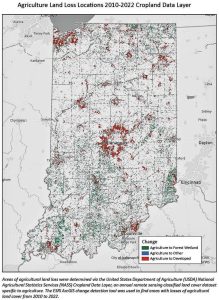
There are a variety of reasons behind the farmland losses, but one major proponent could be the money farm owners could make from selling their land.
Gains in farmland value are prevalent across all classes of land in every region of the country, according to Farmers National Company, the nation’s leading landowner services provider. Strong commodity markets, moderate interest rates, buyer demand and an overall healthy agricultural economy have also supported the growth of land values during this time, the company said.
But the market is showing signs of settling now, however.
“Moving into the second half of 2023 and the first half of 2024, we’ve experienced significant increases in interest rates, declining grain markets, and inflation,” said Paul Schadegg, senior vice president of real estate operations, in a news release. “Despite these negative pressures, the land market has remained relatively resilient but shows signs of settling in general, including single-digit decreases in specific areas.”
A recent regional land value report from Farmers National says “highly productive and highly tillable” farms in the East Region —Indiana, Ohio, Michigan, Kentucky — continue to see values near recent record high prices. This is despite major reductions in grain prices over the last 18 months.
“Less productive and lower tillable acreage farms have seen a 5 to 10% decrease in value but still much less reduction than grain prices, which are 25% to 30% lower over the past 1.5 years,” said Jay VanGorden, area sales manager for the east region, in a news release. “Farmer operators remain the primary buyers of farmland but prices in the eastern region are also driven by investor interest and 1031 tax-deferred exchange buyers around several of the larger cities in our eastern territory, which can drive prices higher especially for several counties out in the countryside as sellers of development property look for replacement land.”
With farm operators being the largest segment of land buyers, Farmers National officials said the biggest impact on land values moving forward will be agriculture profitability. If profit opportunities are limited, motivation to buy will decrease and pressure land values into a downward trend, the news release said.
Bringing back farmland

The ISDA study does show that there have been gains in agricultural land in Johnson County. The Bradleys are an example of this with their golf course-turned-farm.
The couple had lived in Franklin for 25 years before moving to the country. They spent some time looking around before finding their property and making a plan to convert it back to farming, Jeff Bradley said.
“Once you buy a piece of ground this big, you start to think about, ‘Well what can I do with it,’ right?” she said. “So we got interested and decided to turn it back into a farm just because it was a farm before it was a golf course.”
Indian Springs Golf Course operated on the land for several years. At one point, the nine-hole golf course offered disc golf before it closed, according to a 2004 story in the Daily Journal.
When the Bradleys bought the land, many of the signs that it used to be a golf course were fading away. The fairways and greens were overgrown, as were the trees. There were a lot of down trees as well, Jeff Bradley said.
“It was really no longer a golf course when we bought it,” he said. “But neither one of us is interested in playing golf, so we had no desire to try to operate it as a golf course.”
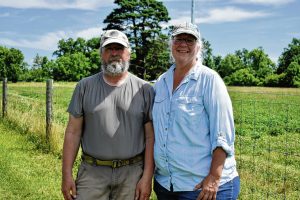
So they settled on making it a farm. But they were novices and didn’t know exactly what they wanted to have there at first, Jeff Bradley said.
Jeff Bradley went off to a grazing school at a farm in Missouri to learn how to be a sheep farmer, Emily Bradley said. She was initially not sure about it, but she came on board as they began to learn more about it.
“We started studying, reading books, getting online, watching lots of videos, trying to figure out, ‘Well how can we do this?” Emily Bradley said. “Then we jumped in and started with a flock of 20 [lambs].”
They had 18 lambs as their crop the first year, keeping six for their breeding stock and buying six more. Last year, they had 42 lambs, which grew to about 54 at the start of 2024 after live births, the Bradleys said.
“It’s growing. We’re doing the right things because they’re doing well and mostly surviving,” Emily Bradley said. “You have some deaths, but that comes with livestock.”
Currently, they’re working on selling some of the lambs to other farms for breeding or meat, Jeff Bradley said.
With their sheep, the Bradleys use a technique called rotational grazing, rather than the traditional “plop them in one pasture and leave them there for a long time,” Jeff Bradley said.
“It’s a healthier way to grow the sheep and it’s healthier for our property,” he said. “It makes the soils better and we’ve seen that in the way that the grasses are grown in the last year especially.”
Happy its farmland
The Bradleys are aware of the farmland loss study conducted by the state. When asked to comment about it, Emily Bradley talked about how neighbors reacted to the land reverting back to a farm.
“There have been people that have stopped by and told us they were so happy that we’re making it a farm again and not breaking it up into housing,” she said.
Even since they’ve brought the land, the Bradleys have seen new homes built around them. A few houses have been built both across the street and down the street on what once was a field where they could watch deer come across the field, they said.
But they’re not complaining.
“It’s just how it is,” Jeff Bradley said.
The Bradleys do not have an opinion on whether the losses outlined in the study are a sign of what’s to come for the county. Jeff Bradley is of the opinion, however, that he wouldn’t tell another person what to do with their own property, he said.
“I believe people have the right and responsibility to do what they think is best for themselves,” Jeff Bradley said. “It’s not for me to say, ‘Yeah, the only person that can sell a farm is a farmer,’ right? It’s nobody’s business what he does with his piece of ground, so I don’t think we have an opinion.”
As for their own future, the Bradleys hope to continue to improve their soil and pastures and make it as productive as a small farm can be.
“We would like to continue to improve the quality of our flock and be able to produce high-quality, responsibly-raised meat for anyone that wants to buy it,” Jeff Bradley said.


